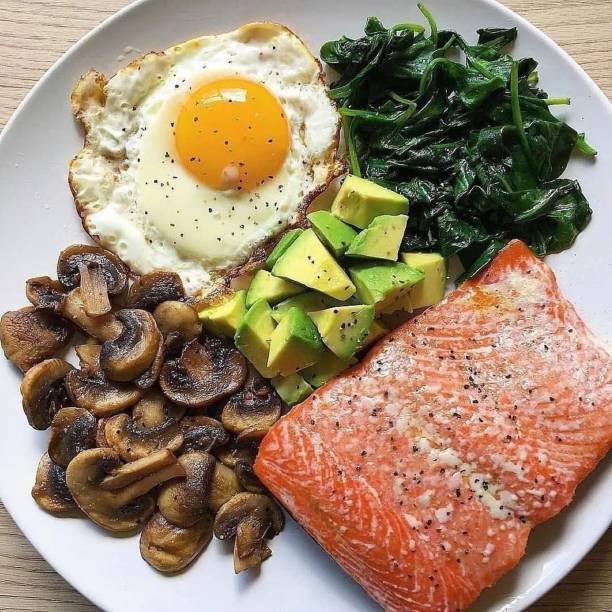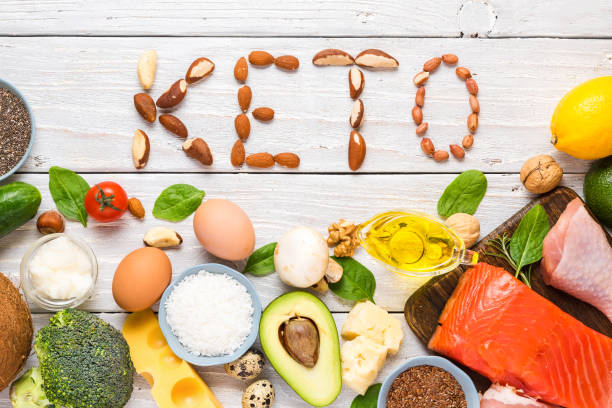The Paleo and Keto Diets: Which one is better for you?

Paleo Diet and Keto Diet: With the growing popularity of low-carb and ancestral eating patterns, the Keto and Paleo diets remain at the forefront of the health and fitness world in 2025. Both diets promise weight loss, improved energy, and better overall health, but they approach nutrition differently.
In this article, we’ll break down the key differences, benefits, and challenges of these diets to help you determine which one might be the best fit for your goals in 2025.
Gabapentin for Anxiety: Dosing, Side Effects, and More
What Is the Keto Diet?

The Ketogenic (Keto) Diet is a low-carb, high-fat diet designed to put your body into a metabolic state called ketosis, where it burns fat for fuel instead of carbohydrates.
Key Features:
- Macronutrient Ratio:
- 70–80% fat, 10–20% protein, and 5–10% carbs.
- Focus Foods:
- Fat-rich foods like avocados, butter, cheese, nuts, and oils.
- Moderate protein sources like chicken, beef, and fish.
- Minimal carbs from low-carb vegetables and some fruits (like berries).
Goals:
- Rapid weight loss.
- Stabilized blood sugar levels.
- Enhanced mental clarity and focus.
How to Meal Prep for a Healthy Week in Just 2 Hours
What Is the Paleo Diet?

The Paleolithic (Paleo) Diet is based on eating whole, unprocessed foods that mimic the diet of our ancestors during the Paleolithic era. It eliminates modern processed foods and focuses on nutrient-dense, natural ingredients.
Key Features:
- Macronutrient Flexibility: No strict ratios of carbs, fats, and proteins, allowing for more personalization.
- Focus Foods:
- Lean meats, fish, vegetables, fruits, nuts, and seeds.
- Healthy fats like olive oil and coconut oil.
- Exclusions:
- Grains, legumes, dairy, refined sugar, and processed foods.
Goals:
- Improved digestion.
- Reduced inflammation.
- Enhanced overall health through clean eating.
10 Simple Habits for a Longer, Healthier Life
Paleo and Keto Diets: Key Differences
| Category | Keto Diet | Paleo Diet |
| Primary Goal | Achieve ketosis for fat burning. | Mimic ancestral eating for better health. |
| Carbs Allowed | Very low (<50g per day). | Moderate (no refined carbs). |
| Dairy | Allowed (cheese, butter, heavy cream). | Excluded. |
| Grains/Legumes | Excluded. | Excluded. |
| Sweeteners | Allowed (stevia, erythritol). | Excluded. |
| Fats | Focus on high-fat intake (avocado, oils). | Encourages natural fats (nuts, seeds). |
| Protein | Moderate intake. | High intake from lean meats. |
Benefits of the Keto Diet
- Weight Loss:
By reducing carbs and entering ketosis, the body burns fat effectively. - Blood Sugar Control:
Helps manage diabetes and insulin resistance by stabilizing blood sugar levels. - Cognitive Benefits:
Many people report improved mental clarity and focus while on Keto. - Appetite Suppression:
High-fat meals promote satiety, reducing hunger and cravings.
Benefits of the Paleo Diet
- Whole Food Nutrition:
Encourages the consumption of unprocessed, nutrient-dense foods. - Reduced Inflammation:
Eliminating processed foods and refined sugar can reduce inflammation and improve digestion. - Flexibility:
Allows for more carb intake, making it sustainable for various lifestyles. - Improved Gut Health:
Focuses on foods that promote a healthy microbiome, such as fruits, vegetables, and fermented options.
Challenges of Each Diet
Keto Diet:
- Difficulty in Sustaining: Restricting carbs can feel limiting over time.
- Keto Flu: Initial symptoms like fatigue, headaches, and irritability as the body adapts.
- Nutrient Deficiency: Lack of fruits and certain vegetables may lead to nutrient gaps.
Paleo Diet:
- Elimination of Foods: Excluding dairy, grains, and legumes can be challenging for some.
- Meal Preparation: Requires significant planning and preparation to avoid processed foods.
- Cost: Lean meats and fresh produce can be more expensive.
What Works Best in 2025?
The answer depends on your health goals and lifestyle.
Choose Keto If:
- You’re looking for rapid weight loss.
- You need to manage blood sugar or insulin sensitivity.
- You can sustain a high-fat, low-carb eating style.
Choose Paleo If:
- You prefer a more flexible diet.
- You want to focus on overall health and wellness.
- You enjoy a variety of fruits, vegetables, and lean meats.
Can You Combine the Two?
Yes, combining Keto and Paleo is possible and is often referred to as Paleo-Keto. This hybrid approach includes:
- Avoiding processed foods and dairy (Paleo).
- Maintaining low-carb intake to stay in ketosis (Keto).
It offers the benefits of both diets but requires careful planning.
What is a low-carb diet?
A low-carb diet restricts dietary carbohydrates, mainly those derived from grains, sugar-sweetened beverages, and breads.
One study suggests that a low-carb diet contains 10-30% of calories from carbohydrates, although no specific definition exists. For a healthy person who consumes 2000 calories daily, this equates to 50-150 grams of carbohydrates.
When following a low-carb diet, it is common to increase your intake of protein, healthy fats, and vegetables to replace carbohydrates and increase fullness.
It also limits carbohydrates, and you eliminate many high-calorie foods from your diet. These factors can work together to reduce your overall calorie intake and help you lose weight.
A low-carb diet is associated with several health benefits for people with diabetes. These include weight loss, improved blood sugar control, and risk factors for heart disease.
It is also commonly used for weight loss.
While a low-carb diet may not suit everyone, it can be a viable weight loss option for most healthy people.
Low carb pros and cons
pros:
- Can be sustained long-term
- May contribute to your weight loss
- Less extreme adaptation phase compared to keto
- Eliminates many processed high-carb foods
- Less restrictive and easier to follow than keto
Cons:
- Limiting food choices
- Limiting fruit intake
- Can affect micronutrient intake
- You may experience bloating or constipation.
Summary
In 2025, both the Keto and Paleo diets continue to be powerful tools for achieving health and fitness goals. The Keto diet excels in rapid weight loss and blood sugar management, while the Paleo diet promotes overall health through natural, whole foods.
The best choice ultimately depends on your preferences, lifestyle, and health needs. Whether you go Keto, Paleo, or a blend of both, the key is consistency and finding a diet that you can sustain long-term.
What’s your pick for 2025? Let us know in the comments!
Frequently Asked Questions (FAQs)
The Paleo diet focuses on eating whole, unprocessed foods similar to what ancient humans might have eaten, while the Keto diet is centered around reducing carbohydrate intake and increasing fats to enter a metabolic state called ketosis.
Fruits are allowed on the Paleo diet in moderation since it’s based on natural, unprocessed foods. However, fruits are limited on the Keto diet due to their high carbohydrate and sugar content.
Both diets can lead to weight loss, but the Keto diet typically results in faster weight loss due to the low-carb, high-fat approach that promotes ketosis. However, long-term sustainability varies by individual.
No, both Paleo and Keto diets avoid grains and legumes. Paleo excludes them because they are not considered part of our ancestral diet, while Keto excludes them because they are high in carbohydrates.
The Paleo diet may be easier for some people to follow long-term because it allows more food variety, including fruits and a wider range of vegetables. Keto’s strict carb limits can be more challenging to maintain.



